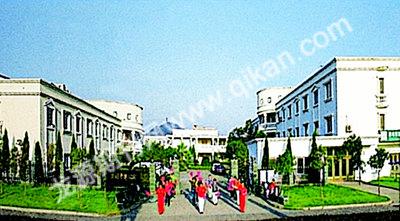A Utopia Called Fanglin Village
2009-06-08ZhuangXiangjuan
Zhuang Xiangjuan

Fanglin Village, Luqiao District in Taizhou, a city in eastern Zhejiang, is a symbol of rural prosperity. The villagers call it paradise. In the early 1980s, however, it was a very poor village. There was almost no village business. When it rained, most shanty houses leaked and dirty roads became a quagmire.
Smokeless Industry
In 1983, the 27-year-old Fang Zhonghua became the village head. The first question he asked himself was, what should he do to lift the village out of poverty? The answer was obvious. The village had easy access to a network of highways. So he decided to set up market there. In 1984, the village started a market for second-hand machinery. The sales volume was 450,000 yuan in the first year and the village received 20,000 yuan as profit, a big fortune in these years.
Markets and private factories mushroomed around the village. Villagers began to have deep pockets. But the days looked grayer and rivers became dirtier. They could hardly hear birds chirping anywhere.
In 2002, the villagers finally had enough of the pollution. Fang Zhonghua led a group of CPC members and managers in the village to visit Tengtou Village in Ningbo, a rural model for harmonized growth of ecology and economic takeoff. The guests from Fanglin were totally impressed by Tengtou. They decided to follow suit.
People in Fanglin took action. Four factories that discharged pollutants were shut down, cutting off an income of 10 million yuan. The village banked its future on the development of marketplaces.
Fanglin has grown into a village of four special markets. The largest one is an automobile sales market built in 2002. In 2007, 23,000 units of automobiles were sold at an aggregate amount of 3 billion yuan, accounting for 43% of the total volume of auto sales in Taizhou District. With a full range of facilities and services, it is now the best auto market in eastern China. This market alone yields an annual income of 18 million yuan for the village. The villagers hug themselves for the right decision of turning to the smokeless industry.
Villas
The living quarters of the village speaks against the traditional image of rural residential areas where houses stand separately in disarray and there are plots of vegetables here and there. The houses in todays Fanglin are crisscrossed by a network of roads, flanked by trees and flowers. The village has, among other things, a tennis court, a basketball playground, a swimming pool and a kindergarten. The village is free of pollution of wastewater, noise, or dust. The area where the village spreads is now 60 percent covered by trees.
The rapid urbanization of the village started in 1997 when the first batch of villa-styled houses was erected. Some people commented that houses looked nice but the environment was just nothing to write home about. The villagers were determined to show they knew how to improve and protect environment. Gradually, rules were formulated and applied. A centralized rubbish treatment system was introduced. A sewage drainage system was introduced and connected to the citys network.

The villagers also live a harmonized life. Public order is well maintained. People are encouraged to respect the old, take care of the environment. The village is honored as a model village for its peace, prosperity, environment, and harmonious life.
Care for Elderly Residents
Now the village has two houses built especially for elderly villagers. One house has 26 apartments for singles and the other 53 apartments for couples. Women above 55 of age and men above 60 of age can apply to live in the houses. Villagers conclude that it is indeed a life of communism trumpeted so many years ago and now this dream life comes true.
Many villagers now enjoy longevity. In a typical family, the grandma now lives in a single apartment and her two sons in their 70s also live in separate double apartments at the old peoples houses and they are taken care of by the village. The elderly people without families to support them receive a subsidy of 8,000 in cash a year, among other forms of help, and a village health care clinic provides a 24/7 service to these residents in their golden age. □
